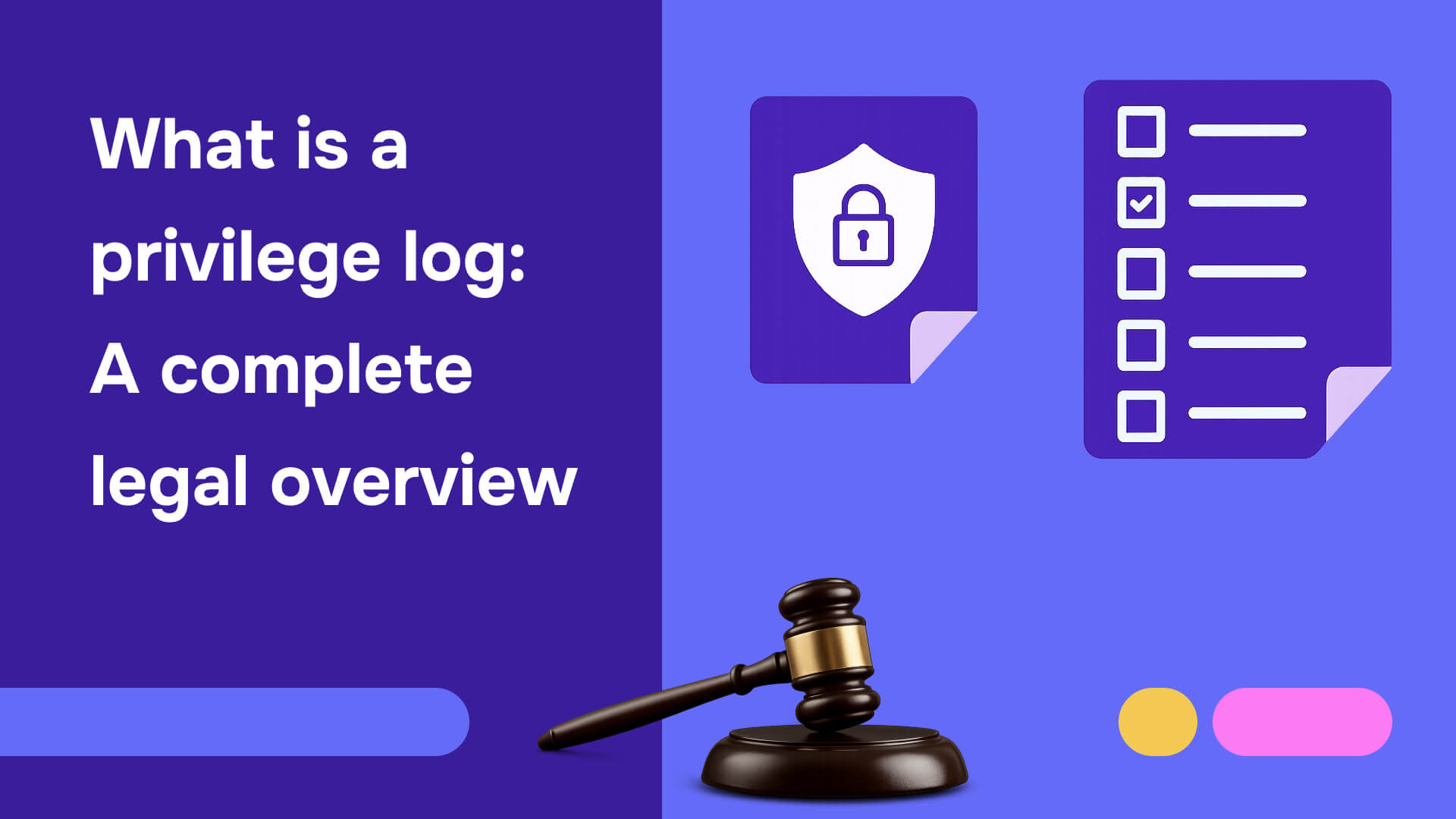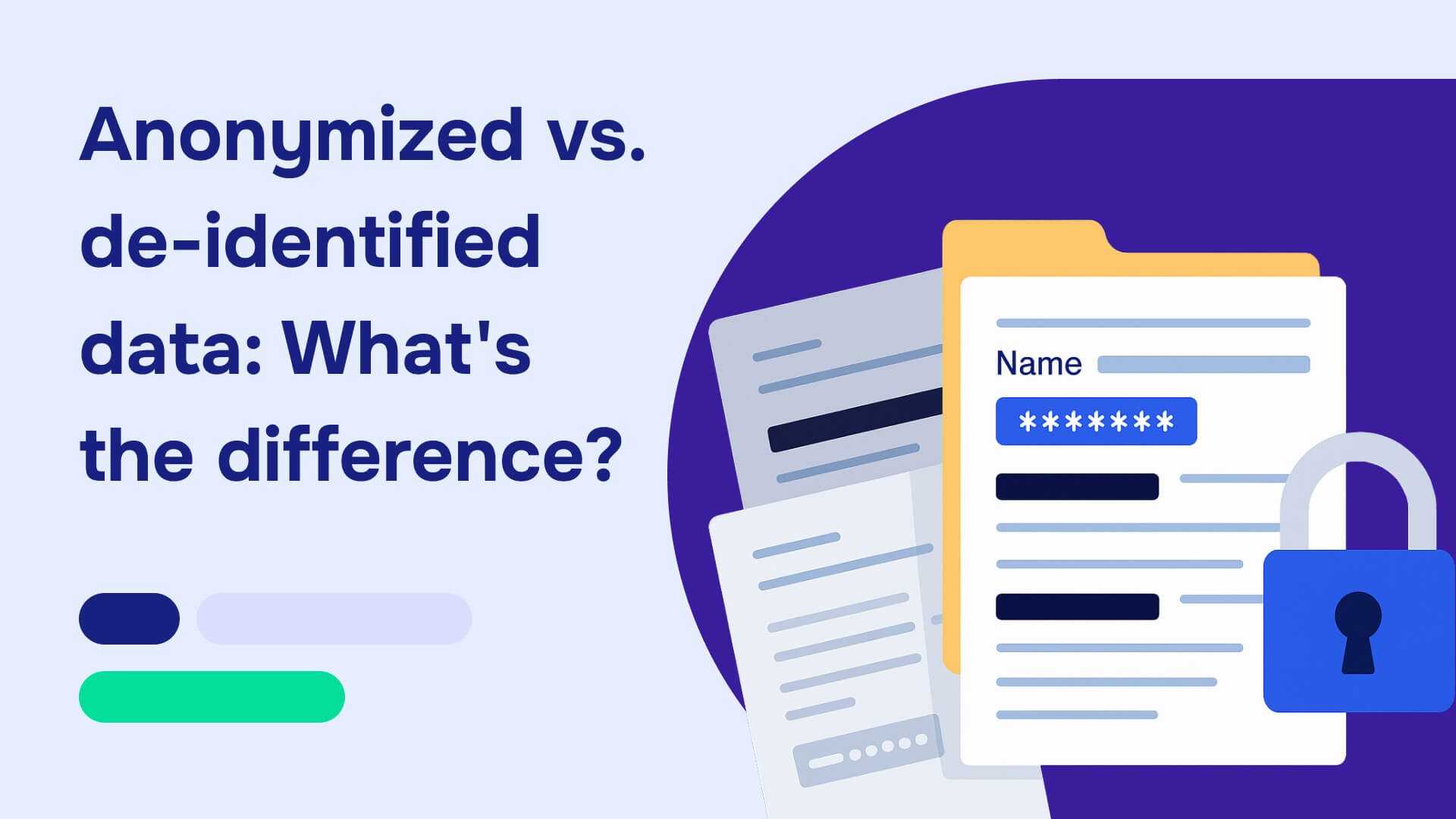The fact that the average data breach costs financial institutions $5.9 million is one of the primary reasons why data protection is paramount in the banking sector. What’s more, failing to comply with the industry’s strict regulations concerning customer data protection can leave you liable for costly financial penalties and struggling to repair a damaged reputation.
Much of the confidential data managed by banks is recorded in both digital and physical documents. The solution to protecting this data is redaction to completely and permanently remove sensitive information from a document before it’s shared or published.
What is data protection?
Data protection refers to the processes and technologies organizations use to protect sensitive information. In the financial sector, data protection has a special focus on ensuring that customer data, like personally identifiable information (PII), is secured from unauthorized access or misuse. Financial institutions can take steps to safeguard confidential data using a combination of manual and automated security procedures and tools.
The importance of data protection for banks
To protect their reputation and their bottom line, banks must take steps to ensure that sensitive data is kept safe from unauthorized access or misuse. Maintaining data security is critical for several reasons, including:
- Regulatory Compliance: Banks that fail to protect data can find themselves getting hit with severe penalties and legal actions for non-compliance with regulations like GLBA and FFIEC rules.
- Customer Trust: Data breaches also undermine customer confidence, leading to loss of business and difficulties attracting new clients.
- Fraud Prevention: A lapse in data security is rarely an isolated occurrence. Compromised data can enable ongoing fraudulent activities like identity theft and money laundering, threatening a bank's assets and stability.
- Intellectual Property Protection: Not only is customer data at risk, but other forms of sensitive data, including your firm’s intellectual property, such as trading algorithms, can be exposed if data protection is lax.
- Business Continuity: Data security violations disrupt operations, causing downtime and financial losses that can be difficult to recover from.
- Legal Liabilities: Banks often face lawsuits from affected parties in the event of data breaches. These lawsuits create additional losses in the form of both time and monetary damages on top of regulatory penalties and the other costs associated with a breach.
- Market Stability: Data breaches in major banks can have ripple effects across the financial system, causing market volatility. Failing to protect customer data erodes trust and can lead to fear-driven financial decisions on the part of customers, negatively impacting the overall financial sector.
How to implement data protection for banks
In an age of increased regulatory scrutiny and widespread data distribution due to open banking, financial institutions are under greater pressure than ever to build out a comprehensive and proactive approach to data protection. Below, you’ll find the key elements of any strong financial data security program.
Encryption
Encryption tools are a crucial component of data protection and should be used for both in-transit and at-rest data. Encryption employs complex algorithms to scramble data, rendering it indecipherable if it is accessed without the encryption key. Organizations should also implement encryption key management systems for proper key handling and rotation.
Access controls
Defining policies for data access is another critical component of data protection. Organizations must establish and optimize role-based access control strategies. It’s an encouraging development that multi-factor authentication (MFA) is being implemented in several industries, including the financial sector, which is another crucial part of establishing access controls.
Network security
Most data is stored digitally, making network security equally as important as physical security for many firms. A key part of achieving strong data protection is the implementation of firewalls, intrusion/detection/prevention systems, and secure network protocols like SSL/TLS. These tools and systems protect against the many hackers and cyber criminals who are constantly seeking ways to achieve unauthorized access to the confidential information stored within banks.
Secure redaction
Digital and physical documents are laden with your financial institution’s sensitive data. Whether it is for regulatory filings to bodies like the SEC, court filings involving bank statements, or due diligence, banks are often required to share or publish documents that may contain confidential data. In order to ensure that customer data and intellectual property are kept secure, financial institutions must use robust, automated redaction tools. These solutions use advanced techniques like OCR and AI to permanently remove sensitive information from documents, including hidden metadata, before they are made available. This ensures compliance and minimizes data exposure risks.
Employee training
Having the most advanced automated solution is only part of the data protection equation. Ultimately, the employees within your firm will either be your most significant asset or your greatest liability. The point of divergence between these two possible outcomes is training. Organizations should conduct frequent, comprehensive training programs to familiarize employees with data handling best practices, security protocols, and early detection of potential threats.
Incident response planning
There’s no way to entirely eliminate the possibility of a data security incident. This is why it’s also crucial for organizations to develop a strong incident response plan. This needs to outline clear procedures for efficiently identifying, responding to, and mitigating their impact.
Audits and assessments
Every security program has room for improvement. So, it’s also important to perform periodic audits, risk assessments, and vulnerability scans to identify potential weaknesses in your data protection measures. On top of that, the cyber threat landscape is constantly evolving, with cyber criminals utilizing AI and deep fakes to find new ways of breaching legacy systems. It’s critical to stay informed and up-to-date on the latest attacks in order to protect your organization’s data.
Read also: How to edit bank statement securely
What are the challenges of implementing data protection?
It’s one thing to understand the importance of data protection, it’s another to put it into practice. Financial institutions like banks often face challenges on their journey to building a strong data protection program similar to those you’ll find below.
Complexity of regulations
Research from Deloitte predicts significant upheavals in the U.S. regulatory landscape for banks and other financial institutions in 2024 and beyond. These changes, combined with varying requirements across international jurisdictions (GDPR), make achieving compliance highly resource-intensive.
Legacy systems and manual document redaction
Contemporary organizations often have a data protection program that is a combination of legacy and modern technologies and protocols. As new threats arise, organizations often face compatibility issues and a lack of support for advanced security features. Outdated processes like manual redaction are error-prone and can be difficult to streamline. Plus, upgrading systems can be extremely expensive.
Insider threats
Data breaches don’t just happen because of cybercriminals. In fact, 22% of all data breaches occur due to human error. This can be something as simple as one employee accidentally attaching the wrong document to an email before sending it. Preventing accidental data mishandling by employees is one of the critical challenges of implementing a data protection program. Insider threats illustrate the need for strong access controls, good employee training, and comprehensive employee monitoring.
Evolving cyber threats
Financial institutions can also find their data protection efforts hampered by the constant emergence of new cyber threats. This, in turn, requires continuous security updates, which can be difficult to implement throughout your organization. Responding to these threats requires advanced threat detection and response capabilities.
Balancing security and convenience
Friction is another key issue when it comes to building a data protection program for banks. It’s important to focus on implementing stringent security protocols without impeding your operations. Security measures like multi-factor authentication (MFA) can increase friction and slow down the user experience. On the other hand, it’s also crucial to ensure accurate authentication of your users. It’s important to balance your security efforts to ensure that they never harm productivity or your customer service.
Resource constraints
Some organizations may also be faced with constrained budgets, limiting how much they can invest in data protection measures. In these cases, it’s critical to be strategic and prioritize your security spending across the most-important areas.
Third-party risks
Many financial institutions rely on third parties for different parts of their supply chain. It’s crucial to take steps to ensure data protection across your entire supply chain by monitoring and vetting each of your partners. Any data you share with external entities must be protected both by technology and contractual agreements.
Streamline bank data protection with Redactable's AI-powered redaction platform
Protecting customer data is at the heart of data protection for banks. The key method used to achieve customer data protection is redaction. However, legacy manual redaction processes are often tedious, time-consuming, and error-prone.
Redactable offers a cutting-edge solution capable of automatically identifying and removing all confidential data from documents. Discover this cloud-based platform that empowers you to redact documents permanently and efficiently, ensuring regulatory compliance while minimizing risks.
Retractable delivers tangible value to your organization in several different ways:
- Intuitive redaction wizard: Our user-friendly wizard guides you through the entire process, eliminating complex training requirements.
- Permanent redaction: Unlike masking techniques, our redactions are irreversible, providing true data protection.
- AI-powered accuracy: Advanced AI algorithms accurately identify and redact sensitive information, with little-to-zero human interaction required.
- Cloud-based convenience: Redact documents seamlessly from any browser without downloads or plugins.
- Compliance assistance: Comprehensive audit trails, redaction certificates, and adherence to industry regulations simplify compliance efforts.
- Time and cost savings: Redactable significantly reduces the time and resource investments required by automating redaction.







